Yemeni Houthis Fire Missile Targeting US Warship In Gulf Of Aden

Yemen’s Houthis launched a missile attack against the USS Carney, an Arleigh Burke-class guided missile destroyer, in the Gulf of Aden.

Yemen’s Houthis launched a missile attack against the USS Carney, an Arleigh Burke-class guided missile destroyer, in the Gulf of Aden.
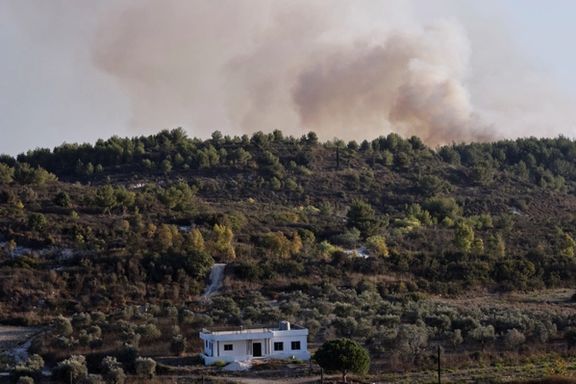
Israel has allegedly struck a major Iranian-Hezbollah airport in Qalaat Jabbour in southern Lebanon.
According to a Jerusalem Post report, the airport was used by the militant group to launch aerial raids against Israeli territory.
Referring to the airport, Israel Defense Minister Yoav Gallant said in September that the Iranian flag was raised there just 20 kilometers away from the Israeli border.
“Put differently, the land is Lebanese; the control is Iranian; the target is Israel,” he pointed out.
Though the Iranian regime has avoided any direct involvement in the Gaza war, Tehran has used its proxy groups in the region such as Houthis and Hezbollah to attack Israeli and American targets.
Following the targeted killing of Saleh al-Arouri, a top Hamas leader, by Israel in Beirut’s Hezbollah-controlled southern suburbs on January 2, the tensions have escalated along Lebanon-Israel border. However, the two sides have avoided an all-out military confrontation.
Following Hamas’ October 7 attack on Israel, many expected a full-fledged war to erupt also against Hezbollah, but the Iranian-backed force has limited its involvement to border skirmishes with Israel.
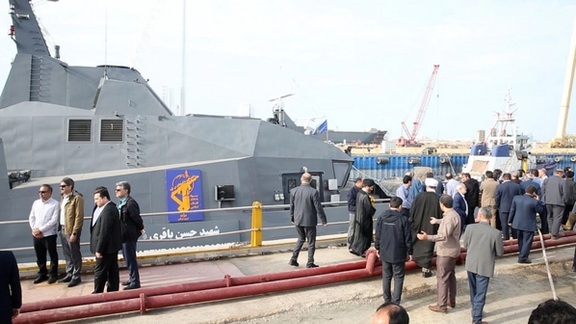
Amid international concerns about the proliferation of Iranian drones, the Islamic Republic is scaling up, including supplying Sudan and launching drone carriers.
Maritime news website Splash247 reported this week that Iran is readying to launch its first drone carrier, the Shahid Bagheri, a converted boxship -- previously called Sarvin -- that has undergone modifications to accommodate a large fleet of long-range drones.
Exclusive Planet Labs satellite images obtained by Splash, following an investigation by TankerTrackers.com, revealed how the 3,280 TEU (twenty-foot equivalent unit) boxship delivered from Hyundai Heavy Industries in the year 2000 went through the reconfiguration at a shipyard west of Bandar Abbas in southern Iran.
The Shahid Bagheri, now controlled by Iran’s Revolutionary Guards, has added width to its deck and has around 170 meters (about 558 ft) of runway. It can now accommodate the departure and landing of a very large fleet of fixed-wing drones, adding to merchant shipping’s long list of concerns surrounding the security situation in the Middle East.
“We anticipate Iran’s coming drone carrier will eventually wreak havoc against commercial vessels in the Arabian Sea, somewhere halfway to India,” TankerTrackers CEO Samir Madani told Splash.
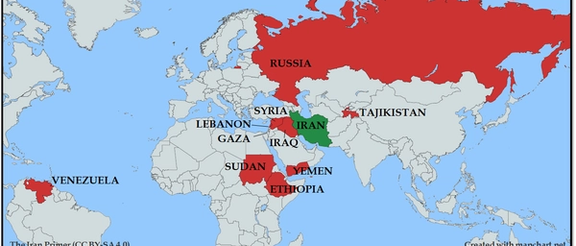
Iran's foray into drone carrier technology comes as the Islamic Republic has been assisting the Houthis in Yemen in their targeting of merchant vessels since November. Around 35 merchant ships have been targeted by dozens of drones and missiles. One car carrier, the Galaxy Leader, was hijacked, along with 25 crew members.
The Iran-backed Houthis say the campaign aim is to force Israel to end its offensive in Gaza, which followed the October 7 invasion of Israel, when Hamas, another Iran-backed militia, killed 1,200 mostly civilians and took hundreds of hostages.
Vice Admiral Brad Cooper, the head of the US Navy’s 5th Fleet, in charge of operations in the Middle East, said, “What I’ll say is Iran is clearly funding, they’re resourcing, they are supplying and they’re providing training. They’re obviously very directly involved. There’s no secret there.”
While the world seems united to bring back security to the Red Sea shipping, with the US leading a large naval coalition there and China calling on Tehran to rein in its Yemeni proxy, the Islamic Republic has been supplying combat drones to Sudan, which has a 700-kilometer Red Sea coastline.
Through supplying Sudan’s army, Iran is taking sides in a nine-month civil war fueled by armed groups keen for Red Sea access that has displaced millions so far and risks further destabilizing the wider region. Iran’s drones can give an edge to the Sudanese military, which has been losing territory to a paramilitary group allegedly backed by the United Arab Emirates (UAE).
Tehran and the Sudanese army re-established diplomatic ties just days after the Hamas attack on Israel after a seven-year hiatus linked to Sudan’s role in a Saudi Arabia-led coalition that fought the Houthis in Yemen.
Iran's support for Sudan, which involves shipments of Mohajer-6 drones capable of air-to-surface precision-guided attacks, may pit Iran against the UAE, which Sudan’s military, UN experts and Western diplomats say backs the Rapid Support Forces. The rival group is now controlling many of the country’s major cities. In addition to Russia, Iran is also providing Mohajer-6 drones to Ethiopia too.
Arming Sudan would enhance Tehran's military sway across the broader Middle East where it backs Hamas and Islamic Jihad in Gaza, Lebanon's Hezbollah, Houthis in Yemen, Kata’ib Hezbollah in Iraq, and Ethiopia’s army as well as dozens of other armed groups.
Despite mounds of evidence on the use of Iran’s drones in current conflicts such as the Russian invasion of Ukraine and the Houthis’ destabilizing of the Red Sea, Iran keeps denying its role with Foreign Minister Hossein Amir-Abdollahian saying this week that it is a “misconception” that Iran has “the remote control over the Houthis, Hezbollah, and Hamas.” The Red Sea blockade came directly from Iran's Supreme Leader, whose brainchild was to create a network of regional proxies to exert Iranian might.
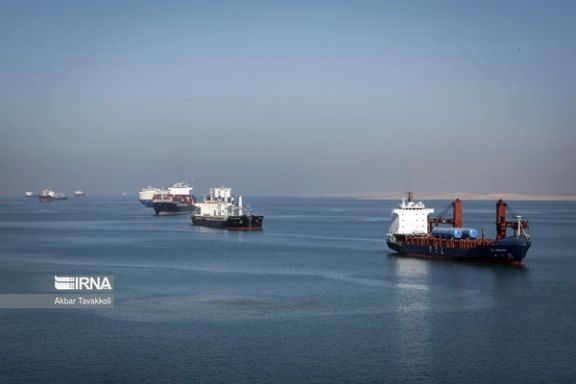
China has called on Iran to intervene in the Red Sea shipping blockade by the Iran-backed Houthis, Reuters reports.
The Yemeni militia have disrupted the Red Sea with dozens of attacks in solidarity with Gaza militants Hamas since the Palestinian group declared war on Israel on October 7.
Meetings have allegedly taken place in Beijing and Tehran as China aims to protect its own shipping, threatening that if action isn’t taken by Iran to reign in its proxy, business relations between the two nations will be at risk.
"Basically, China says: 'If our interests are harmed in any way, it will impact our business with Tehran. So tell the Houthis to show restraint'," Reuters quoted an Iranian official briefed on the talks, speaking on condition of anonymity.
The attacks, which began in November, have raised the cost of shipping and insurance by disrupting a key trade route between Asia and Europe used widely by ships from China. The passage is responsible for 12 percent of global trade.
For the last decade, China has been Iran’s biggest trading partner, with Chinese oil refiners buying over 90 percent of Iran’s crude exports last year alone, according to Kpler.
While global sanctions weigh heavily on Iran, China has offered a lifeline, gaining huge discounts in the process, though Iran’s oil only accounts for 10 percent of China’s crude imports.
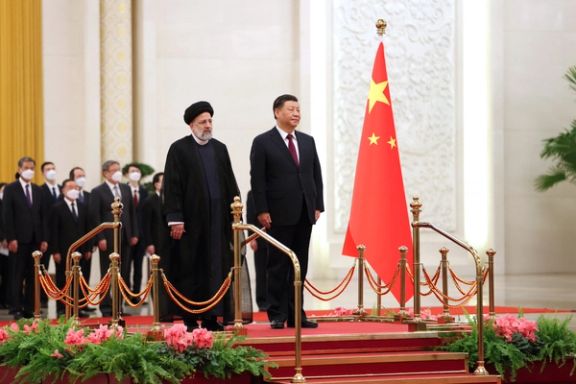
Though the two nations signed a 25-year economic cooperation agreement in 2021, China has not invested as much as was hoped in Tehran, nor engaged in non-oil trade to the extent envisaged.
Iranian state media says Chinese firms have only invested $185 million since then. State media also said last year that Iranian non-oil exports to China fell 68% in the first five months of 2023 while Iran's imports from China rose 40%.
By contrast, Chinese companies committed last year to invest billions in Saudi Arabia after the countries signed a comprehensive strategic partnership in December 2022.
China has been slowly increasing its influence in the region as was seen in last year’s reinstating of ties between Iran and Saudi Arabia after seven years of tensions, China among the nations facilitating the detente.
However, while China holds sway in Tehran, the situation is complex. Tehran risks backlash from its proxies in Lebanon, Syria and Iraq, which have also been acting in allegiance with Hamas against both Israeli and US targets since the Gaza war began.
China's ministry of foreign affairs told Reuters: "China is a sincere friend of the countries of the Middle East and is committed to promoting regional security and stability and seeking common development and prosperity."
"We firmly support Middle Eastern countries in strengthening their strategic independence and uniting and collaborating to resolve regional security issues," without directly referring to the talks over the Red Sea passage. Iran's foreign ministry did not comment.
The disruption by the Yemeni militia, trained and backed by Tehran, has triggered military strikes by the US and British forces but it has failed to stem the tide.
According to Reuters, a senior US official said Washington had asked China to use its leverage with Iran to persuade it to restrain the Houthis, including in conversations Secretary of State Antony Blinken and National Security Advisor Jake Sullivan had this month with senior Chinese Communist Party official Liu Jianchao.
Iran denied the claims that China had since expressed concerns but on January 14, China's foreign minister Wang Yi called to end the attacks on civilian ships in the Red Sea, though did not name the Houthis or reference Iran.
On Thursday, Houthi spokesman Mohammed Abdulsalam said Iran had not conveyed any message from China about scaling back attacks.
"They will not inform us of such a request, especially since Iran's stated position is to support Yemen. It condemned the American-British strikes on Yemen, and considered Yemen's position honourable and responsible," he told Reuters.
While Tehran claims that the Houthis’ action is independent, in spite of the blockade being called for by Iran’s Supreme Leader himself, the complexity of Iran’s shadow war against Israel and the US continues, and the influence of China yet to be seen.

Iran has dismissed reports claiming the US warned Tehran prior to recent twin bombings by ISIS in Iran.
“If a security message was passed on by the US, it was intended to protect Washington from Iran’s response, especially after the Israeli war in Gaza,” IRNA quoted an Iranian security official as saying.
The Wall Street Journal reported on Thursday that the US had warned the Islamic Republic of the impending bombings which claimed the lives of 95 people in Kerman earlier this month.
In spite of the warning that Islamic State’s affiliate in Afghanistan, ISIS-Khorasan, known as ISIS-K, planned to commit the attacks at the commemoration ceremony of slain Qods Force commander Qassem Soleimani, Iran failed to prevent the deadly bombings, the report added.
Separately, Iran International has learned that the US passed the warning to Iran more than one week before the attack.
Speaking to Iran International, a US official said, “Prior to ISIS’ terrorist attack on January 3, 2024, in Kerman, Iran, the US Government provided Iran with a private warning that there was a terrorist threat within Iranian borders.
“The US Government followed a longstanding ‘duty to warn’ policy that has been implemented across administrations to warn governments against potential lethal threats. We provide these warnings in part because we do not want to see innocent lives lost in terror attacks.”
The attack was the deadliest since the birth of the Islamic Republic in 1979. Many Iranians questioned why Soleimani’s family members and top officials were absent from the memorial at his gravesite in Kerman, raising the validity of the US warning as to their absence.
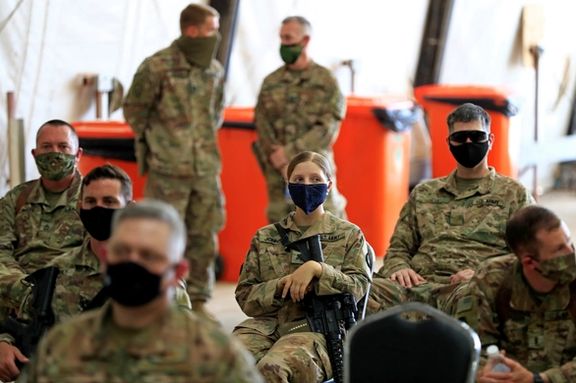
The Biden administration is set to move towards a reduced role for the US military in Iraq, amid continuing attacks by Iran proxies on American interests in the region.
In a statement published Thursday, secretary of defense Lloyd Austin confirmed that the US-Iraqi Higher Military Commission (HMC) will convene meetings in the “coming days” to discuss new ways of cooperation in the post-ISIS era.
The statement has been widely read as the beginning of the end of US military presence in Iraq, despite the Pentagon’s categorical rejection of that reading.
“Let me be clear, the HMC meeting is not a negotiation about the withdrawal of US forces from Iraq,” Pentagon’s deputy press secretary Sabrina Singh said in a briefing Thursday. “The United States and the coalition are in Iraq at the invitation of the Iraqi government to fight ISIS. The HMC will enable the transition to an enduring bilateral security partnership between the US and Iraq.”
The timing of the announcement has led many to believe it is related to the regional crisis following the Hamas’ attack on Israel and the Israeli onslaught on Gaza.
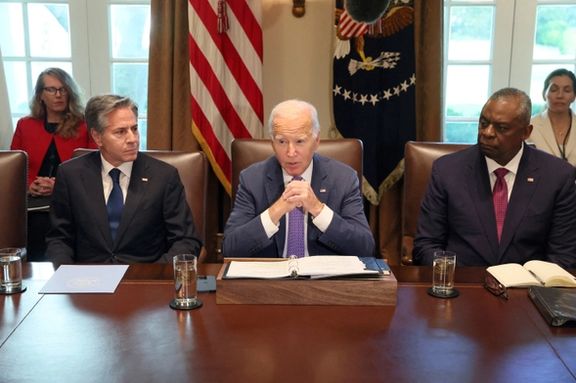
Since last October, American bases in Iraq and Syria have been targeted more than 150 times by Iran-backed groups, and Tehran has repeated its threats that the 'Resistance Front' will evict the US from the region. Shiite groups in Iraq supported by Iran have also intensified their calls for all foreign forces to leave the country.
It is hard to tell if that demand has forced the Pentagon announcement – or if it would be on the agenda during the coming HMC talks.
Austin’s statement lacks clarity and detail, which leaves it open to interpretation. It speaks of “transition”, “process”, “timeline”, and “evolving” relationship, all of which can point to a strategic shift from direct military presence to security cooperation. But any shift, according to the statement, would be contingent on “ISIS threat”, “operational requirements”, and the “capability” of Iraqi forces, which can always be used to justify continuous US military presence in Iraq.
The Iraqi party, however, seems to be clearer about its negotiation objectives.
The aim, according to a statement from Iraq’s foreign ministry, is to come up with a “clear timeline determining the duration of the presence of the international coalition advisors in Iraq, initiating a gradual and thoughtful reduction of their presence on Iraqi soil, concluding the military mission against [ISIS], and transitioning to comprehensive bilateral relations with coalition countries.”
The Iraqi parliament has voted to oust American forces from Iraq. But the Biden administration says it is yet to be asked to do so formally.
Any negotiation between the Iraqis and the Americans will be closely watched from Tehran – and by Assad and the Kurdish forces in the area. A full withdrawal, if it ever happens, would likely put the Iranian regime in a much stronger position than it already is in Iraq and Syria.
Earlier in the week, it was reported that the Biden administration may be considering a full withdrawal of American troops from Syria in 2024. That report was also swiftly rejected by the Pentagon as “erroneous.”
There are about 2,500 American troops in Iraq and about 900 in Syria. The numbers are small when compared to the numbers in the early years after the Bush-led invasion of Iraq. At its peak, there were almost 170,000 US forces on the ground in Iraq.
The US Central Command (CENTCOM) announced in a post on X that the Iran-backed militant group fired an anti-ship missile to target the warship at 1:30 p.m. (Sanaa time) on January 26.
The USS Carney intercepted and shot down the projectile, CENTCOM reported, further adding that the infrastructure and the forces sustained no damage or injury in the attack.
Though the Iranian regime has avoided any direct involvement in the Gaza war, Tehran has used its proxy groups in the region such as Houthis and Hezbollah to attack Israeli and American targets.
Yemen’s Houthis in particular, have disrupted regional stability and international trade by targeting shipping lanes in the Red Sea, the Gulf of Aden, and the Bab el-Mandeb Strait.
The group claims they only target Israeli and Israel-bound ships. Their campaign began after Iran’s Supreme Leader Ali Khamenei in early November urged Muslims to initiate a blockade of Israel.
Citing regional and Iranian sources, Reuters reported last week that commanders from Iran’s IRGC and Lebanon’s Hezbollah are in Yemen helping to direct Houthis’ attacks in the Red Sea.
In December, the United States launched a multinational naval coalition in the Red Sea to protect trade vessels. According to Reuters, 20 countries, including Britain, Norway, Seychelles, France, the Netherlands, Australia and Italy, have joined the coalition.
On January 10, the UN Security Council passed a resolution, calling on the Houthis to stop attacks on shipping immediately.
Two days after the resolution was approved, the US and UK targeted dozens of Houthis’ sites in Yemen.